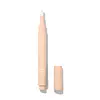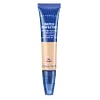What's inside
What's inside
 Key Ingredients
Key Ingredients

 Benefits
Benefits

 Concerns
Concerns

 Ingredients Side-by-side
Ingredients Side-by-side

Water
Skin ConditioningDimethicone
EmollientButylene Glycol
HumectantTriethylhexanoin
MaskingOctyldodecanol
EmollientMica
Cosmetic ColorantLauryl PEG-9 Polydimethylsiloxyethyl Dimethicone
Skin ConditioningSilica
AbrasiveMagnesium Sulfate
Diglycerin
HumectantDisteardimonium Hectorite
StabilisingPhenoxyethanol
PreservativeLauryl PEG-10 Tris(Trimethylsiloxy)Silylethyl Dimethicone
EmulsifyingPropylene Carbonate
SolventAluminum PCA
AstringentTriethoxycaprylylsilane
Hexylglycerin
HumectantCaprylyl Glycol
EmollientDisodium EDTA
Dipropylene Glycol
HumectantSodium Citrate
BufferingTocopherol
AntioxidantSodium Hyaluronate
HumectantSodium Alum
AstringentCI 77891
Cosmetic ColorantIron Oxides
Water, Dimethicone, Butylene Glycol, Triethylhexanoin, Octyldodecanol, Mica, Lauryl PEG-9 Polydimethylsiloxyethyl Dimethicone, Silica, Magnesium Sulfate, Diglycerin, Disteardimonium Hectorite, Phenoxyethanol, Lauryl PEG-10 Tris(Trimethylsiloxy)Silylethyl Dimethicone, Propylene Carbonate, Aluminum PCA, Triethoxycaprylylsilane, Hexylglycerin, Caprylyl Glycol, Disodium EDTA, Dipropylene Glycol, Sodium Citrate, Tocopherol, Sodium Hyaluronate, Sodium Alum, CI 77891, Iron Oxides
Cyclopentasiloxane
EmollientC12-15 Alkyl Benzoate
AntimicrobialGlycerin
HumectantDimethicone
EmollientTalc
AbrasivePolymethyl Methacrylate
PEG-10 Dimethicone
Skin ConditioningDimethicone/PEG-10/15 Crosspolymer
Acrylates/Dimethicone Copolymer
Skin ConditioningBoron Nitride
AbsorbentDimethiconol
EmollientMagnesium Sulfate
Nylon-12
Aluminum Dimyristate
Emulsion StabilisingTriethoxycaprylylsilane
Phenoxyethanol
PreservativeTocopheryl Acetate
AntioxidantCaprylyl Glycol
EmollientDisodium Stearoyl Glutamate
CleansingPunica Granatum Fruit Juice
MaskingVitis Vinifera Juice
AntioxidantPotassium Sorbate
PreservativeHexylene Glycol
EmulsifyingAscorbyl Glucoside
AntioxidantEuterpe Oleracea Juice
Skin ConditioningDipropylene Glycol
HumectantTocopherol
AntioxidantSilica
AbrasiveSapphire Powder
Palmaria Palmata Extract
Skin ProtectingCI 77891
Cosmetic ColorantIron Oxides
CI 77007
Cosmetic ColorantCyclopentasiloxane, C12-15 Alkyl Benzoate, Glycerin, Dimethicone, Talc, Polymethyl Methacrylate, PEG-10 Dimethicone, Dimethicone/PEG-10/15 Crosspolymer, Acrylates/Dimethicone Copolymer, Boron Nitride, Dimethiconol, Magnesium Sulfate, Nylon-12, Aluminum Dimyristate, Triethoxycaprylylsilane, Phenoxyethanol, Tocopheryl Acetate, Caprylyl Glycol, Disodium Stearoyl Glutamate, Punica Granatum Fruit Juice, Vitis Vinifera Juice, Potassium Sorbate, Hexylene Glycol, Ascorbyl Glucoside, Euterpe Oleracea Juice, Dipropylene Glycol, Tocopherol, Silica, Sapphire Powder, Palmaria Palmata Extract, CI 77891, Iron Oxides, CI 77007
 Reviews
Reviews

Ingredients Explained
These ingredients are found in both products.
Ingredients higher up in an ingredient list are typically present in a larger amount.
Caprylyl Glycol is a humectant and emollient, meaning it attracts and preserves moisture.
It is a common ingredient in many products, especially those designed to hydrate skin. The primary benefits are retaining moisture, skin softening, and promoting a healthy skin barrier.
Though Caprylyl Glycol is an alcohol derived from fatty acids, it is not the kind that can dry out skin.
This ingredient is also used as a preservative to extend the life of products. It has slight antimicrobial properties.
Learn more about Caprylyl GlycolCi 77891 is a white pigment from Titanium dioxide. It is naturally found in minerals such as rutile and ilmenite.
It's main function is to add a white color to cosmetics. It can also be mixed with other colors to create different shades.
Ci 77891 is commonly found in sunscreens due to its ability to block UV rays.
Learn more about CI 77891Dimethicone is a type of synthetic silicone created from natural materials such as quartz.
What it does:
Dimethicone comes in different viscosities:
Depending on the viscosity, dimethicone has different properties.
Ingredients lists don't always show which type is used, so we recommend reaching out to the brand if you have questions about the viscosity.
This ingredient is unlikely to cause irritation because it does not get absorbed into skin. However, people with silicone allergies should be careful about using this ingredient.
Note: Dimethicone may contribute to pilling. This is because it is not oil or water soluble, so pilling may occur when layered with products. When mixed with heavy oils in a formula, the outcome is also quite greasy.
Learn more about DimethiconeDipropylene Glycol is a synthetically created humectant, stabilizer, and solvent.
This ingredient helps:
Dipropylene glycol is technically an alcohol, but it belongs to the glycol family (often considered part of the ‘good’ alcohols). This means it is hydrating and gentle on skin unlike drying solvent alcohols like denatured alcohol.
As a masking agent, Dipropylene Glycol can be used to cover the smell of other ingredients. However, it does not have a scent.
Studies show Dipropylene Glycol is considered safe to use in skincare.
Learn more about Dipropylene GlycolMagnesium Sulfate is a salt. More specifically, it is an epsom salt, or the bath salt used to help relieve muscle aches.
Despite having ‘sulfate’ in the name, it isn’t a surfactant or cleansing agent like sodium lauryl sulfate. Unlike those sulfates, magnesium sulfate doesn’t have the same cleansing or foaming properties (it's simply a type of salt).
In cosmetics, Magnesium Sulfate is used to thicken a product or help dilute other solids. It is a non-reactive and non-irritating ingredient.
One study shows magnesium deficiency may lead to inflammation of the skin. Applying magnesium topically may help reduce inflammation.
You can find this ingredient in sea water or mineral deposits.
Learn more about Magnesium SulfatePhenoxyethanol is a preservative that has germicide, antimicrobial, and aromatic properties. Studies show that phenoxyethanol can prevent microbial growth. By itself, it has a scent that is similar to that of a rose.
It's often used in formulations along with Caprylyl Glycol to preserve the shelf life of products.
Silica, also known as silicon dioxide, is a naturally occurring mineral. It is used as a fine, spherical, and porous powder in cosmetics.
Though it has exfoliant properties, the function of silica varies depending on the product.
The unique structure of silica enhances the spreadability and adds smoothness, making it a great texture enhancer.
It is also used as an active carrier, emulsifier, and mattifier due to its ability to absorb excess oil.
In some products, tiny microneedles called spicules are made from silica or hydrolyzed sponge. When you rub them in, they lightly polish away dead skin layers and enhance the penetration of active ingredients.
Learn more about SilicaTocopherol (also known as Vitamin E) is a common antioxidant used to help protect the skin from free-radicals and strengthen the skin barrier. It's also fat soluble - this means our skin is great at absorbing it.
Vitamin E also helps keep your natural skin lipids healthy. Your lipid skin barrier naturally consists of lipids, ceramides, and fatty acids. Vitamin E offers extra protection for your skin’s lipid barrier, keeping your skin healthy and nourished.
Another benefit is a bit of UV protection. Vitamin E helps reduce the damage caused by UVB rays. (It should not replace your sunscreen). Combining it with Vitamin C can decrease sunburned cells and hyperpigmentation after UV exposure.
You might have noticed Vitamin E + C often paired together. This is because it is great at stabilizing Vitamin C. Using the two together helps increase the effectiveness of both ingredients.
There are often claims that Vitamin E can reduce/prevent scarring, but these claims haven't been confirmed by scientific research.
Learn more about TocopherolTriethoxycaprylylsilane is a silicone used to bind and stabilize ingredients.
As an emulsifier, it helps prevent ingredients from separating. This can help elongate the shelf life of products.
Triethoxycaprylylsilane is often used to coat mineral sunscreens ingredients to help give a better feel. It also helps reduce oxidative stress in sunscreens.
Learn more about TriethoxycaprylylsilaneThis ingredient is a combination of red, black, and yellow iron oxide pigments. This combination of colors is usually found in foundation, because it results in a "skin" color.